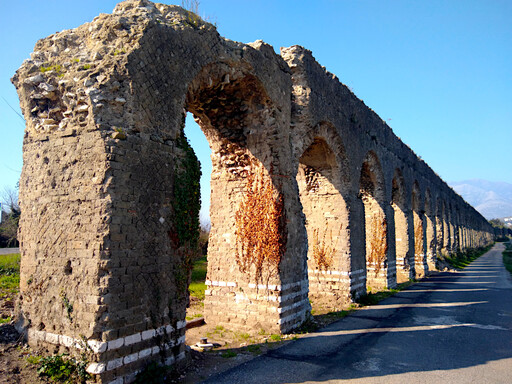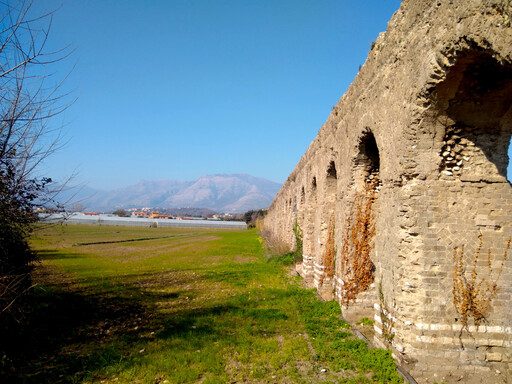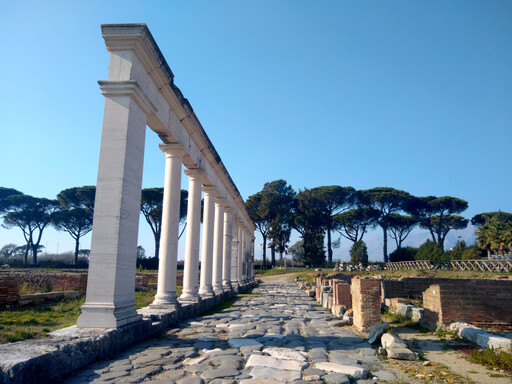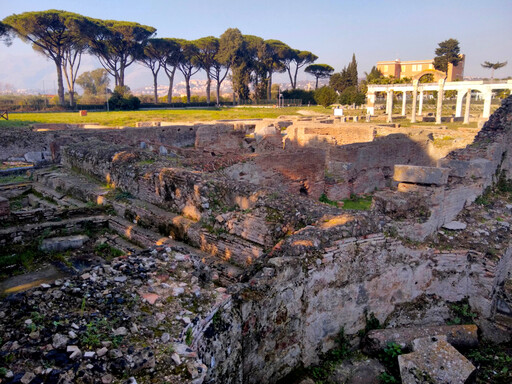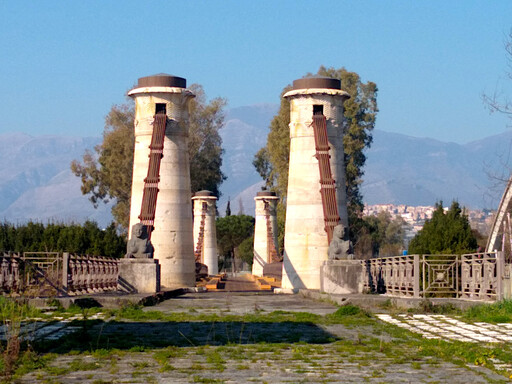Minturnae, Minturno
Minturnae was one of the major ancient city of the Αὔσονες/Auruncí, who inhabited the mountainous regions near the Gulf of Gaeta. It was conquered by Rome in 314 B.C and completely destroyed, but later reconstructed as a Roman settlement and frequented by the nobility, as were the other villae maritimae on the Tyrrhenian coast: Formiae, Pirae, and Cáiéta.
See the previous post for the modern (or less-ancient) parts of the city. More importantly for someone such as myself is that preserved there are the ruins of the Roman city, abandoned in the 6th century A.D. after its aqueduct was interrupted by the invading Lombards, with its capitolium, fora, temples, thermae, and theater with capacity for four thousand people.
On the road leading from the city center — called even today “via Appia” and closely following the “régína viárum” which connected Rome to Brundisium passing through the heart of the ancient city — can be seen the remains of the aqueduct which stretched 11km and brought water from the monte Aurunci to the coast.
Le petit prince s'assit sur une pierre et leva les yeux vers le ciel:
― Je me demande, dit-il, si les étoiles sont éclairées afin que chacun puisse un jour retrouver la sienne. Regarde ma planète. Elle est juste au-dessus de nous… Mais comme elle est loin!
― Elle est belle, dit le serpent. Que viens-tu faire ici?
― J'ai des difficultés avec une fleur, dit le petit prince.
― Ah! fit le serpent.
Et ils se turent.
― Où sont les hommes? reprit enfin le petit prince. On est un peu seul dans le désert…
― On est seul aussi chez les hommes, dit le serpent.
